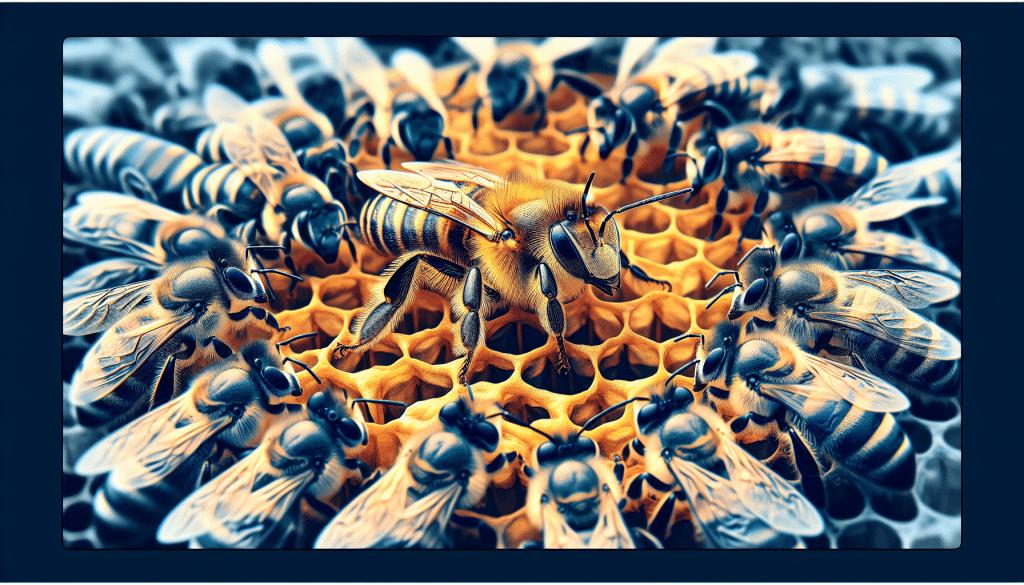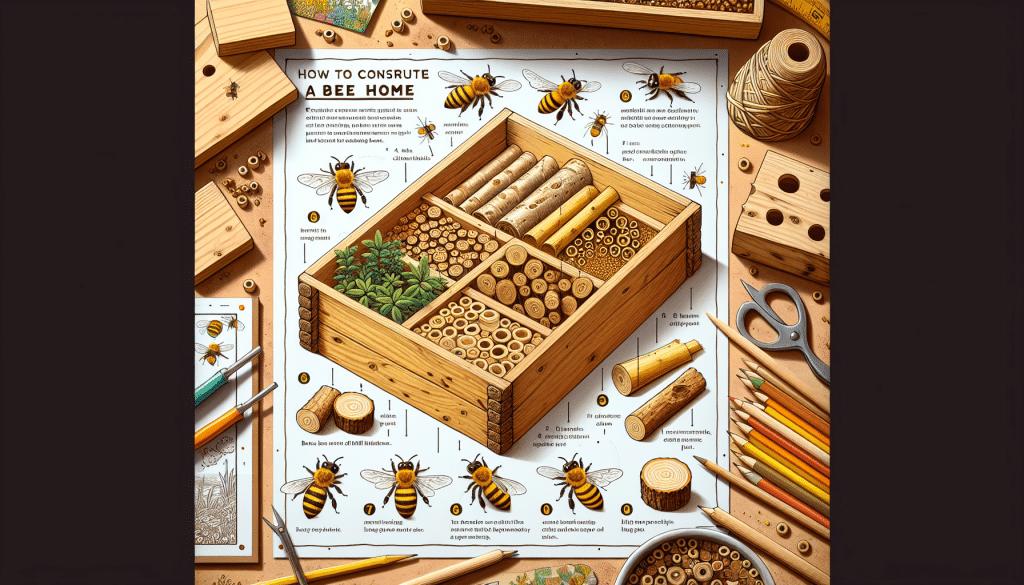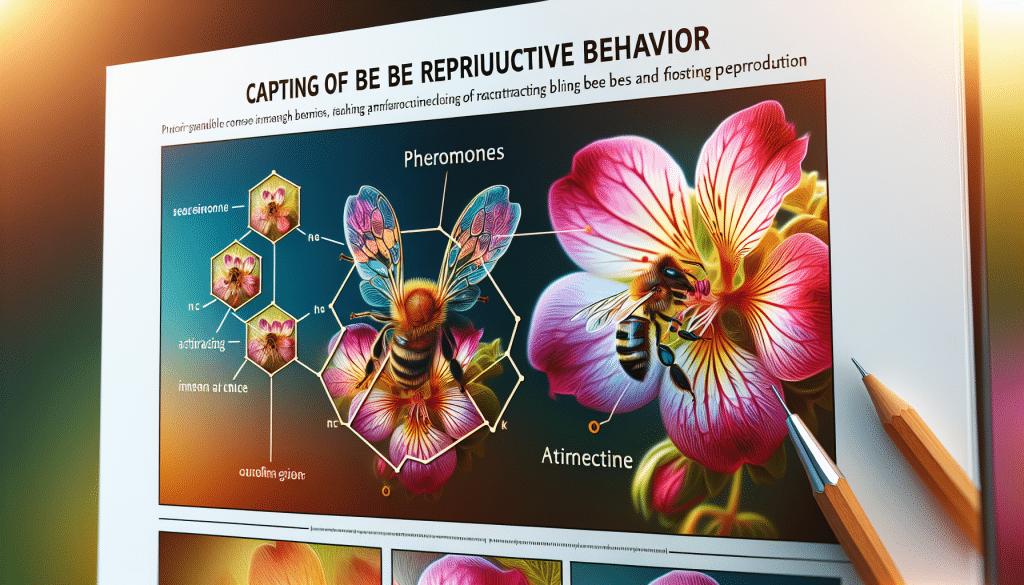So you think your social life is complicated? Well, let me tell you about the social organization of bee colonies. These buzz-worthy creatures have developed a complex hierarchy that would put any high school clique to shame. From the queen bee reigning supreme to the hardworking drones and the ever vigilant worker bees, it’s a social structure that’s as fascinating as it is hilarious. So grab your metaphorical bee suit and get ready to buzz through the ins and outs of the most exclusive bee club in town.
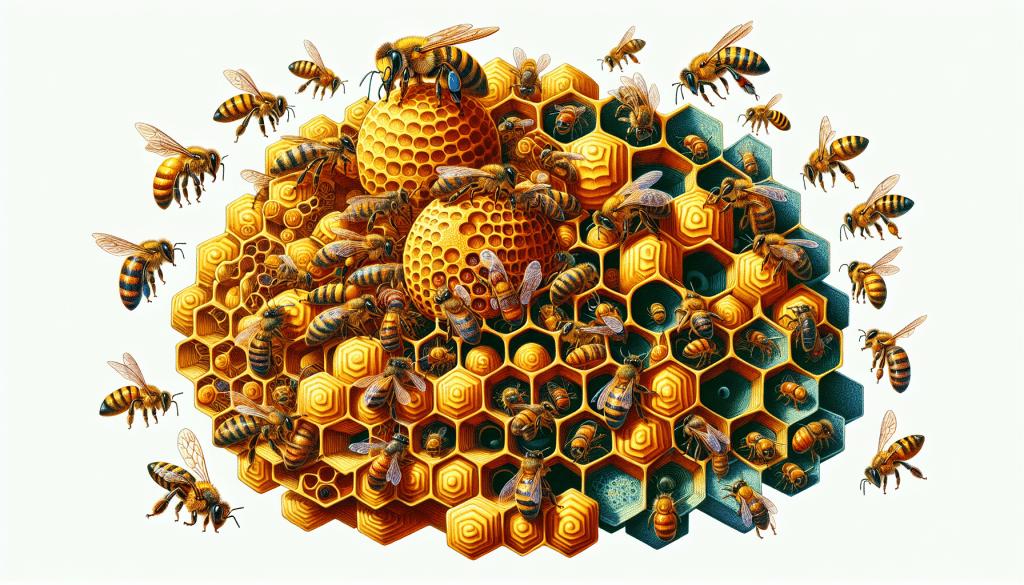
Understanding Bee Societies
Bees are not just your ordinary insects buzzing around aimlessly – they actually have a complex social structure that rivals even the most organized human societies. This phenomenon, known as eusociality, is what makes bee colonies fascinating and highly efficient. From the Queen Bee, who rules with an iron stinger, to the diligent worker bees and the often overlooked male drones, each member of the hive has a specific role to play in the grand scheme of things.
Defining Eusociality
Eusociality is a term used to describe the sophisticated social structure found in some animal species, including bees. In eusocial societies, individuals within a colony live cooperatively, have overlapping generations, and share responsibilities for raising offspring. This high level of social organization is truly remarkable, as it requires specialized roles, communication systems, and intricate behavioral patterns to ensure the survival and success of the colony as a whole.
Identifying the Bee Castes
Within a bee colony, there are three distinct castes: the Queen Bee, the worker bees, and the male drones. Each caste has its own set of characteristics and responsibilities, which contribute to the overall functioning and survival of the colony. While the Queen Bee takes charge of reproduction, the worker bees handle the day-to-day tasks, and the male drones play a pivotal role in mating with new queens.
The Lifecycle of a Bee Colony
To truly understand the dynamics of a bee colony, it is important to delve into the lifecycle of these remarkable creatures. A bee colony starts with the establishment of a new hive, usually by a swarm of bees led by a new Queen Bee. As the colony grows, the Queen Bee lays eggs, which hatch into larvae and go through various stages of development. The mature bees then take on their respective roles within the hive, ensuring the survival and growth of the colony.
The Queen Bee
Ah, the Queen Bee – the ruler of the hive, the mother of all bees, and quite possibly the busiest bee of them all. The Queen Bee is the only sexually mature female in the colony and her primary role is reproduction. She can lay up to 2,000 eggs per day, ensuring a constant supply of new bees to sustain the colony. But being the Queen Bee is not all about lounging around and giving orders; she also has her fair share of challenges and responsibilities.
Role and Responsibilities
As the Queen Bee, your main job is to keep the colony thriving by producing new bees. You are responsible for laying fertilized eggs, which will develop into female worker bees or potential new Queens. It’s a demanding task that requires you to be constantly attended to by worker bees, who groom and feed you to ensure your well-being. You are the heart and soul of the colony, driving its growth and survival.
Mating and Reproduction
Now, let’s talk about the birds and the bees – or rather, the bees and the bees. As the Queen Bee, you have the special privilege of mating with male drones from other colonies. This helps maintain genetic diversity within the bee population. Once you’ve mated, you can store the sperm in a special organ called the spermatheca, which allows you to fertilize eggs throughout your lifetime. Incredible, isn’t it?
Queen Supersedure and Replacement
Being the Queen Bee does come with a little catch – your reign is not eternal. Sometimes, the worker bees decide it’s time for a change and they orchestrate a process called queen supersedure. In this fascinating phenomenon, the worker bees create a new queen from an existing larva and prepare her to take over the throne. Once the new queen emerges, it’s time for you to gracefully step down and let the next generation lead the colony.
Worker Bees: The Labor Force
Now let’s turn our attention to the worker bees, the unsung heroes of the colony. These diligent little workers are the backbone of the hive, taking on various tasks that keep the colony running smoothly. But just like any organized workforce, the worker bees have their own development stages, division of labor, and specialization in different tasks.
Development Stages
As a worker bee, you start your life as an egg, carefully laid by the Queen Bee. After a few days, you hatch into a larva, where you are diligently fed a special diet of royal jelly. This nutrient-rich substance is reserved exclusively for developing worker bees like yourself, ensuring your proper growth and development. Finally, after a week or so in the larval stage, you pupate and emerge as a fully-fledged worker bee.
Division of Labor by Age
Being a worker bee means you are a jack-of-all-trades, ready to tackle any task assigned to you. However, the division of labor in the hive is largely dependent on age. Younger worker bees typically start by performing tasks within the hive, such as cleaning cells, feeding larvae, and producing wax to build comb. As you grow older and gain experience, you transition to more demanding roles, such as foraging for food and defending the hive.
Specialization in Tasks
While worker bees are capable of performing a wide range of tasks, they do tend to specialize in certain areas. Some worker bees excel at nursing duties, meticulously caring for the brood and ensuring their healthy development. Others may have a knack for ventilation, controlling the temperature and humidity within the hive. And let’s not forget the expert foragers, who tirelessly search for nectar and pollen to sustain the colony. It’s a well-rounded team effort!

Male Drones in the Colony
Now it’s time to give some love to the male drones, the often misunderstood and underappreciated members of the bee colony. While they may not be as industrious as the worker bees, male drones play a vital role in the grand scheme of things. Their primary purpose is to ensure the survival of the colony through mating with new queens, but their journey in the colony is not without its own challenges.
Drone Development
As a male drone, you have a rather unique journey compared to your female counterparts. Unlike worker bees, you do not arise from fertilized eggs, but rather from unfertilized ones. This means that you only have half the number of chromosomes of a worker bee. Nevertheless, you develop through the same stages of egg, larva, and pupa, and eventually emerge as a fully grown drone, ready to fulfill your mission.
The Role of Drones in Colonies
As a drone bee, your prime objective is mating. When the time is right, you venture out of the hive in search of virgin queens from other colonies. Your aim is to pass on your genetic material and ensure the diversity of the bee population. However, your role is not all fun and games. Drones are often seen as “freeloaders” by the worker bees, as they do not participate in the day-to-day tasks of maintaining the hive. But rest assured, your purpose is invaluable to the survival of the colony.
Drone Eviction and Lifespan
Life as a drone is not exactly a fairy tale. Once you have fulfilled your mating duties, worker bees will start evicting drones from the hive. With winter approaching and resources becoming scarce, drones are deemed unnecessary and are left to fend for themselves. Their lifespan is relatively short, ranging from a few weeks to a few months at most. So make the most of your time as a drone, and remember – it’s quality over quantity!
Communication Within the Hive
To keep such a complex society running smoothly, effective communication is essential within the bee colony. While they may not have an advanced language system like us humans, bees have developed remarkable ways to convey important information necessary for the survival of the hive.
The Waggle Dance
Forget about ballroom dancing or salsa – the Waggle Dance is truly the bee’s knees when it comes to communication. This intricate dance performed by forager bees is their way of sharing the location of food sources with their fellow hive mates. Through precise movements and direction, the forager bee indicates the distance, direction, and quality of the food, allowing others to follow in their pollen-rich footsteps. Talk about dancing your way to a good meal!
Pheromones and Chemical Signals
Bees are not just buzzing bundles of joy – they also produce and respond to an array of chemical signals known as pheromones. These secreted substances help regulate the social behavior of the colony, ensuring harmony and cooperation. From the queen’s pheromones that inspire loyalty and maintain order, to the alarm pheromones that alert the colony of potential threats, chemical communication is crucial to the well-being of the hive.
Auditory and Tactile Communication
While bees primarily rely on dances and pheromones for communication, they are not entirely silent creatures. Bees can produce audible sounds when communicating with their hive mates. For example, during swarming, the buzzing sound of the bees indicates their intentions and intentions to the rest of the swarm. Additionally, bees also communicate through tactile means, such as gentle antennal touches, which convey information about food availability and hive conditions.
Foraging and Resource Allocation
When it comes to survival, bees are master foragers. Their ability to locate and gather nectar and pollen is essential not only for their own sustenance but also for the growth and maintenance of the colony as a whole. However, efficient foraging requires careful scouting, resource allocation, and teamwork among the worker bees.
Scouting for Food Sources
Before embarking on a major foraging mission, diligent worker bees engage in scouting expeditions to locate the best food sources. They venture out in search of nectar-rich flowers and evaluate the quantity and quality of available resources. Through observation and communication, they relay this information back to the hive, guiding others to the most fruitful feeding grounds.
Nectar and Pollen Collection
Once the scouts have done their job, it’s time for the worker bees to kick into high gear and start collecting nectar and pollen. They have specialized anatomical adaptations, such as hairy legs and digestive enzymes, that allow them to efficiently gather and transport these vital resources back to the hive. By collecting nectar for honey production and pollen for protein-rich bee bread, they ensure the nourishment and survival of the entire colony.
Sharing and Distribution of Resources
In a bee colony, sharing is caring, especially when it comes to vital resources. Worker bees have an intricate system of distributing nectar and pollen within the hive. They pass these resources from mouth to mouth through a process known as trophallaxis, ensuring that every member of the colony receives their fair share. This communal sharing of resources helps maintain the overall health and productivity of the colony.
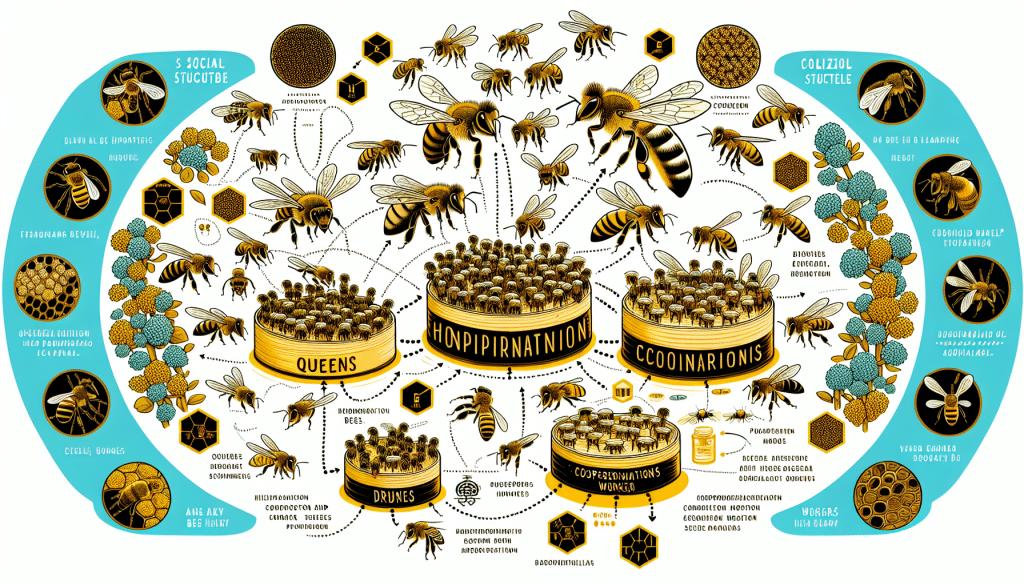
Colony Defense and Protection
Just like any well-organized society, bee colonies have their own security force to protect against threats and predators. From guard bees tirelessly standing watch to coordinated responses to potential dangers, colony defense is crucial for the survival of the hive.
Guard Bees and Hive Security
At the entrance of the hive, you’ll find the dedicated guard bees on duty. These frontline defenders closely inspect any incoming bees, ensuring that only authorized members of the colony gain access. They use their antennae to identify familiar scents and pheromones, sniffing out any potential intruders that may pose a threat to the hive’s well-being. It’s their job to keep the peace and maintain the security of the colony.
Response to Predators and Threats
When faced with a threat, bees have an impressive ability to mobilize their defenses. Through coordinated alarm pheromones and visual cues, they communicate danger to the rest of the hive. This triggers a swift response, as other bees join forces to defend their home. From stinging attackers to forming protective barriers around the hive, bees are dedicated protectors willing to sacrifice themselves for the greater good.
Disease Management and Hygiene
Just like any community, bee colonies are not immune to diseases and parasites. However, bees have developed unique strategies to combat these threats and maintain a healthy living environment. Worker bees meticulously inspect each other for signs of disease, removing any sick or deceased members from the hive. They also perform hygienic behaviors such as cleaning contaminated cells, thus reducing the spread of diseases and ensuring the overall well-being of the colony.
Colony Reproduction: Swarming
Imagine a bee colony saying, “I think it’s time to move out and start a fresh new chapter.” That’s exactly what swarming is all about. Swarming is a natural process where a hive reproduces by dividing into two or more separate colonies. It’s like a bee version of a family reunion, but with a twist!
Swarm Preparation
Before a colony can swarm, preparations need to be made. The worker bees start by creating special queen cells, large enough to accommodate the developing new queens. The existing queen typically lays eggs in these cells, and once they hatch, the larval queens are fed an enhanced diet of royal jelly. As the potential new queens mature, the workers begin to make their own plans for the upcoming swarm.
Queen Departure and Swarm Movement
When the time is right, the existing queen and approximately half of the worker bees leave the hive in search of a new home. The departing swarm may consist of thousands of bees, forming a buzzing cloud in the air. They fly together, searching for a suitable location to establish a new colony. These swarms can be quite a spectacle, with their impressive coordination and sheer numbers.
Establishment of a New Colony
Once the swarm has found a suitable site, they settle down and begin the process of establishing a new colony. The first order of business is to build comb and furnish the new hive with nectar and pollen brought from the old hive. The surviving workers will temporarily care for the new queen until she is able to take charge. And just like that, a new bee society is born, ready to carry on the legacy.
Seasonal Behaviors of Bee Colonies
Bee colonies are not stagnant entities; they adapt their behaviors and strategies depending on the changing seasons. From clustering together to stay warm during winter to foraging and preparing for fall, bees have a remarkable ability to adjust and thrive in different environmental conditions.
Winter Clustering
When winter arrives, temperatures drop, and food sources become scarce, bees must rely on their collective body heat to survive. They form tightly packed clusters within the hive, shivering their flight muscles to generate heat. The outer bees insulate the core, ensuring everyone stays warm and cozy until the warmer days of spring arrive. It’s like a never-ending group hug throughout the winter months.
Spring Buildup
With the arrival of spring, bee colonies spring into action, ready to make the most of the renewed abundance of nectar and pollen. The worker bees increase their foraging efforts and bring back copious amounts of resources to feed the ever-growing hive. This is also the time when new queens may emerge, challenging the reign of the existing queen and potentially initiating the swarming process.
Summer Foraging and Fall Preparations
During the summer months, bee colonies are in full swing, with worker bees tirelessly foraging for nectar and pollen. The hive is abuzz with activity as they collect, process, and store these precious resources for the colder months ahead. Bees also focus on raising future generations, ensuring the colony’s longevity. As the days grow shorter and temperatures drop, the bees shift their efforts to preparations for winter survival, storing honey and reducing their activity levels.
Conservation and the Future of Bee Societies
The importance of bees in ecosystems and agriculture cannot be overstated. They are vital pollinators, playing a significant role in the reproductive success of countless plant species. However, bee populations face numerous threats, including habitat loss, pesticide use, and climate change. To safeguard the future of bee societies and protect the essential ecosystem services they provide, conservation efforts and sustainable practices are of utmost importance.
Threats to Bee Populations
Bee populations worldwide are under increasing pressure due to the combined effects of habitat destruction, pesticide exposure, diseases, and climate change. The destruction of natural habitats, such as wildflower meadows, reduces the availability of food sources and nesting areas for bees. Pesticides, particularly neonicotinoids, have been linked to bee declines by affecting their behavior, reproduction, and overall health. Climate change also poses a threat, as it alters flowering patterns and disrupts the delicate balance between bees and their environments.
Conservation Efforts and Sustainable Practices
Thankfully, there is still hope for our buzzing buddies. Conservation efforts are underway to protect and restore bee habitats, promoting the planting of native flowering plants and minimizing the use of harmful pesticides. Sustainable beekeeping practices, such as providing adequate forage, reducing stress on colonies, and practicing responsible hive management, also contribute to the well-being of bee populations. Education and awareness about the importance of bees and their role in ecosystems are crucial for fostering a collective commitment to their conservation.
The Importance of Bees in Ecosystems and Agriculture
Bees are not just providers of honey; they are essential pollinators that play a critical role in maintaining the biodiversity and productivity of ecosystems. From wildflowers to crop plants, millions of species rely on bees for successful reproduction. Bees facilitate the transfer of pollen between flowers, ensuring the production of seeds and fruits. In agriculture, bees are indispensable pollinators of many economically significant crops, contributing to food security and the stability of agricultural systems. Without bees, our world would be a lot less colorful and a lot less fruitful.
In conclusion, the social organization of bee colonies is a fascinating and intricate phenomenon. From the majestic Queen Bee to the diligent worker bees and the resilient male drones, each member has a vital role to play in sustaining the colony. Through their division of labor, communication systems, and intricate behavioral patterns, bees have developed an efficient and highly organized society. Understanding and appreciating the complexities of bee societies is not only a testament to their remarkable biology but also a reminder of the importance of protecting and conserving these incredible creatures. So next time you encounter a buzzing bee, take a moment to admire and respect their tireless dedication to their hive and the profound impact they have on our world.

